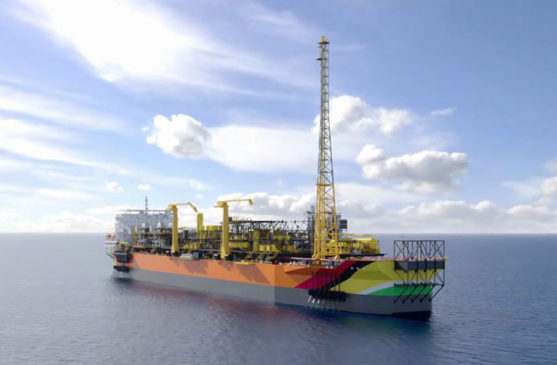
With oil production expected to begin later this month, ExxonMobil will be getting the first shipment of oil, while Guyana will have to wait until sometime next year. This announcement was made by the Department of Energy.
Making these announcements was Department of Energy Director, Dr Mark Bynoe, during a press conference on Wednesday. In justifying this, Bynoe explained that the first lift of crude, which is expected to be one million barrels of oil, is likely to contain the most impurities. As such, he said, it was better for ExxonMobil to collect and refine it using their own facilities.
“ExxonMobil is not just a lifter and operator but they also have refineries…So it makes sense for them to take the first lift and process it so the integrity or quality can be preserved going forward. Our first lift is not anticipated until late February or March going forward,” he said.
According to Bynoe, his department is also gearing up to sign two agreements which will directly impact how much money Guyana really gets from the oil sector. One is an agreement to have a firm audit Exxon’s cost oil claims, which is known to be around US$460 million.
In addition, the Director said they are seeking legal expertise for auditing the cost oil, which is hundreds of millions of US dollars that the oil companies have to get back when oil productions start.
“The contract for the firm to complete cost recovery audit for the historical cost is expected to be signed by the ending of this week. The Department of Energy and the GGMC (Guyana Geology and Mines Commission) will be working along with the Guyana Revenue Authority on this project”.
“Additionally, the Department of Energy is in the process of securing legal expertise to assist in the auditing process,” Bynoe further explained.
Crude-lift agreement
When it comes to the system governing the crude lifting— simply meaning the oil is loaded onto the vessel for transport— Bynoe provided some key information. For one, the crude-lifting agreement is near completion. He also laid down timelines for first oil and lifting of the crude.
“The Department has signed a contract with a crude marketing specialist and a commercial specialist, who will be assisting the Department’s preparations for first oil. The Department is working to conclude a similar contract with a petroleum accounting specialist and a contract administrating specialist”.
“The crude-lifting agreement (CLA) is being finalised and has advanced significantly. The CLA is expected to be completed in the new week and Government will be a signatory as a lifter of crude, along with the Stabroek co-venturers”.
According to Bynoe, their agreement will be based on the Association of International Petroleum Negotiators crude-lifting agreement. He explained that it will be customised to reflect the reality of Guyana’s sector.
Oil refinery
There has been much debate over whether Guyana should build an oil refinery and the methods that should be used.
The Government had previously hired a consultant, Pedro Haas, to carry out a feasibility study into constructing an oil refinery. The results of the study did not favour building a refinery, particularly one with a capacity to produce over 100,000 barrels per day.
In his study, Haas had looked at the cost of building an oil refinery with a capacity of producing more than 100,000 barrels of oil per day. The study had come up with a US$5 billion price tag in order to construct the refinery in Guyana.
The findings of the study had also recommended that the unit at the Finance Ministry should be equipped and its capacity boosted enough to understand the microeconomics of the petroleum industry. This is so that the unit can keep up to date with the daily calculations of market prices and feed into the global market.
The expert had also suggested that as an alternative to the establishment of an oil refinery, the Government could pursue maximising income from commercialising crude oil. Another suggestion was that the Government swap or toll crude oil for products on the global market or create joint ventures with offshore refineries, as well as acquire stock in refining companies.
However, the study was done at a time when ExxonMobil was the only operator in Guyana’s waters to find oil in commercial quantities. Members of the private sector have previously urged that the construction of a refinery be re-explored when more operators find oil.



